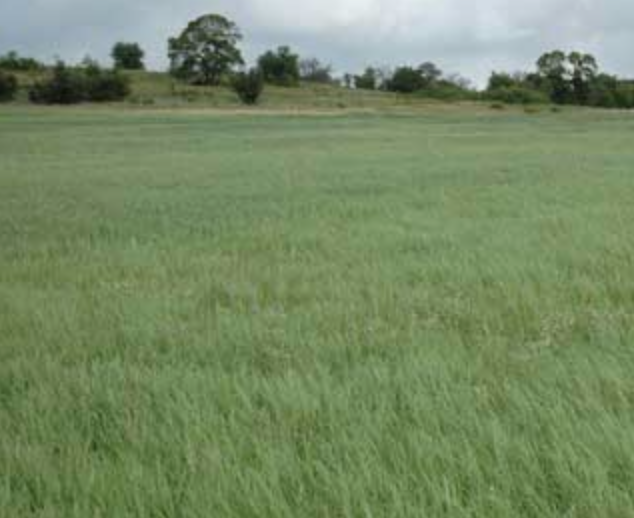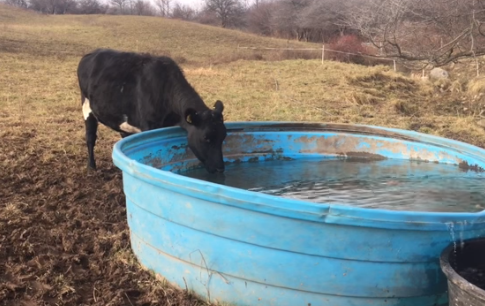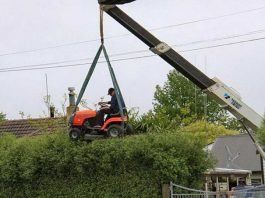Phosphorus is an essential nutrient for plants and all animals. It’s literally in the DNA of everything and everyone. It’s in the top 20 most abundant elements in our solar system, and the 11th most abundant in the earth’s crust. The problem for producers is that it’s not always where you want it to be, and sometimes it’s exactly where you don’t want it. For example, researchers have found that 55 to 65% of the phosphorus cows eat comes out the other end in their manure. That’s good because it’s putting a vital nutrient back on the ground for plants to use. But it can also be bad because excess phosphorus can end up in streams and lakes, causing algae blooms and other water quality issues.
Nutrient pollution, whether it’s from phosphorus or the nitrates that the city of Des Moines is suing 3 rural counties over, is a growing issue and governing bodies everywhere are considering laws and regulations to protect water quality. In Vermont, there is movement afoot to legislate practices for the improvement of water quality. To figure out the best ways to move toward better water quality, evaluations are taking place on 7 Vermont farms. The lessons they’ve learned after the first 18 months of research are things we can all use to better manage our nutrients and help our communities protect and improve water quality.
Timing of manure applications relative to rainfall is critical.

Wet weather events closely following manure application can produce very high nutrient concentrations – 10 to 100 times higher – in runoff. When manure was applied to a hayfield shortly before rainfall, there were exceptionally high concentrations of phosphorus and nitrogen in water running off the field. The phosphorus concentrations were similar to levels typically observed in untreated wastewater. Although farmers may consider applying manure immediately before rain events in an effort to control odors, this practice can have damaging impacts on local streams, rivers and lakes.
Manure Phosphorus Stays Where It’s Dropped
The total amount of phosphorus lost in runoff was a small fraction of the amount applied in manure, even when runoff immediately followed manure application.
Despite the exceptionally high concentrations measured during a runoff event which began shortly following manure application,

the mass of phosphorus (P) lost in runoff was only a small fraction of the P applied in manure. Approximately 98 percent of the P applied in manure remained on the field. This provides an indication of the high degree of accuracy that needs to be achieved so that manure application will not have adverse environmental impacts.
Well-Established Hay Stands Are Good, But….
Phosphorus losses were lowest from fields with well-established hay stands, but were still high relative to surface water quality criteria. Despite the comparatively lower nutrient inputs and low erosion rates on permanent hay fields, concentrations of phosphorus in runoff during storm events (meaning, rain) were roughly 10 times higher than typical state-mandated water quality criteria for streams and as much as 20-30 times higher than in-lake criteria. The water quality criteria serve as a reminder that seemingly small amounts of P can cause surface water problems.

High P = Higher P Runoff
Fields with high soil test phosphorus levels also have higher concentrations of phosphorus in runoff. Among the study watersheds, there is a reasonably strong relationship between the soil phosphorus mass data (in pounds per acre) and P in runoff. If phosphorus is allowed to build up in the soil over time (e.g., P inputs are greater than the amount taken up by the crop), P losses associated with wet weather runoff will increase. Drawdown of soil test P is a slow process; it can take years to remove excess P via crop uptake. It is critical, therefore, to manage phosphorus inputs to closely match crop needs.
It’s the TDP That Makes The Algae Problems
The major portion of P in storm runoff from both hay fields and corn fields was in the dissolved form (TDP). On the average across all monitored stations, about 65 percent of the phosphorus measured has occurred as TDP. Dissolved P is immediately biologically available and therefore might be thought of as “rocket fuel” for algae. Finding that the majority of P leaving all study fields – hay and corn – in the dissolved form has significant implications as to how we should manage manure and in the selection and design of BMPs (better management practices) to reduce losses of P to our surface waters. Specifically, it is likely become increasingly important to emphasize practices that focus on soil health and promoting the infiltration of storm runoff, as opposed to simply filtering it.
Corn Fields Erode More Than Hay Fields
Sediment losses were higher for corn fields than hay fields. Sites in corn have generally recorded the highest and most variable concentration of sediment in runoff. The amount of sediment found in runoff (48.3 – 145.9 mg sediment/liter) was similar to levels typically observed in urban stormwater runoff. Sediment concentrations have been lowest and least variable at permanent hay sites (less than 30 mg/L), suggesting markedly lower erosion rates on these fields.
What Next?
This project will continue for another year. For now, the lessons we can learn from it are some we have known, and some we are still absorbing. With water quality so much in the forefront of many local conversations, we might all become sponges.
The Vermont Agency of Agriculture, Food & Markets, in partnership with the U.S. Department of Agriculture’s Natural Resource Conservation Service (NRCS), the Vermont Agency of Natural Resources, and the Lake Champlain Basin Program, contracted with Stone Environmental, Inc. (Montpelier, VT) to complete monitoring and evaluation program. The project will continue collecting data through the end of 2015 growing season; updated findings will be developed in early-2016.





I agree with Gene. Cows depositing manure in a natural way during grazing is much different than any man devised system. Hay fields while better than corn, are also unnatural as in nature they were grazed.
Ultra High Density Grazing (UHDG) is proving to be very efficient in returning all nutrients to the soil where needed and runoff is very low.
The solution for corn fields is cover crops and much better if they are then grazed. The theory for cover crops came from grasslands where there is cover all year and live roots in the soil all year. Even when the plant is dormant, live roots are contributing.
Nature had it all figured out. Understanding and using nature solves most problems.
Wisconsin has developed a Phosphorous Index (PI) it is combination of soil loss and P attached to soil. We can have high P soils but if erosion (soil loss) is very low. P leaving the farm is also low. We can also have very low testing P soils but with high levels of soil loss and generate high PI.
Erosion is the main issue as well as timing of manure applications. Interestingly Wisconsin research on well managed pastures demonstrates extremely low N and P losses from the system. All manure is not created equal, mechanically applied manure does not behave the same as animal deposited manure. It is very difficult to lose animal applied manure, it has structure and adheres to the forage underneath.
Hayfields are very different than a pasture.
Comments are closed.